You may completely transform your appearance by dying your lace front wig, which is also an excellent option for hiding grey hairs. However, in order to avoid causing harm to your wig, it is essential to carry out these steps correctly. Lace front wigs are an elegant and unobtrusive method to try out new hairdos and colors without the hassle of cutting or coloring your own hair. If you have a lace front wig and you want to give yourself a new look, you may be curious about how to dye your wig in a way that is safe and won’t cause any damage to it.
You may achieve a healthy and sleek-looking lace front wig while also rocking a new color if you deep condition your wig, brush it out, and make sure that your dye is covered evenly. In this article, we’ll discuss the most effective method for coloring your hd lace wigs. This tutorial will assist in ensuring that your dye job turns out beautifully, regardless of whether you have experienced dying lace front wigs or are just about to give it a shot for the first time. So let’s get started:
Table of Contents
Step by Step guide to dyeing your lace front wig
Nothing beats a fresh dye job to give your lace front wig an all-new look. Here’s how you can dye your lace front wig perfectly every time:
1st Step: Conditioning and Sectioning Your Wig
Because a dry wig is unpleasant for everyone to wear, you need to make sure that your wig is in good condition before you start coloring it. You can accomplish this in the following ways:
Apply deep conditioner to your wig:
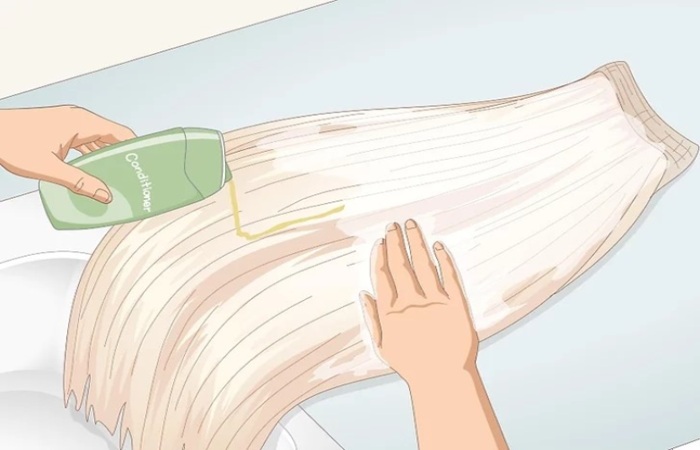
The first thing you need to do is make sure that your wig is properly conditioned, as this will go a long way toward ensuring that its health is maintained. After you’ve conditioned your wig with a thorough conditioner, you should let it air dry. It is recommended to wait approximately one hour after applying a deep conditioner before rinsing it off. The vast majority of beauty supply retailers have deep-conditioning products that are designed to be utilized exclusively for wigs.
Dry your wig:
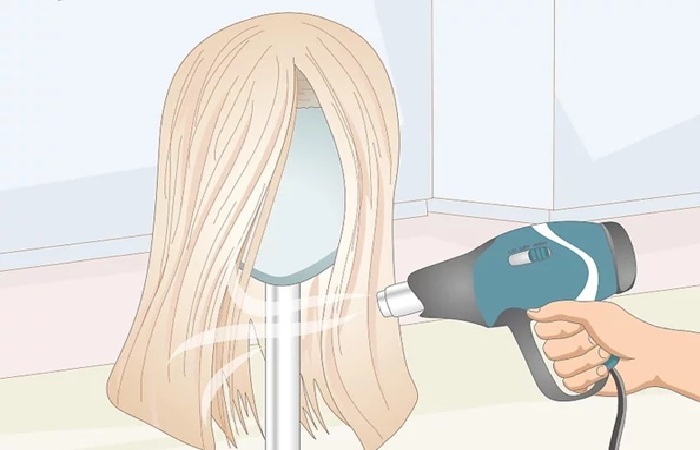
After you have completed conditioning your wig, you should wait until it is totally dry before you attempt to color it. If you don’t, you could end up with a wig that is unevenly colored. After you have finished conditioning your wig, check to see that it is completely dry. If you have a couple of hours to spare, you can either dry it by letting it air dry on a wig form or by using a hair dryer on either your head or a wig form. If the hair in your wig is already damaged, you should not use a hair dryer to dry it because doing so could cause it to become much more damaged.
Comb your wig with a wide-toothed comb:
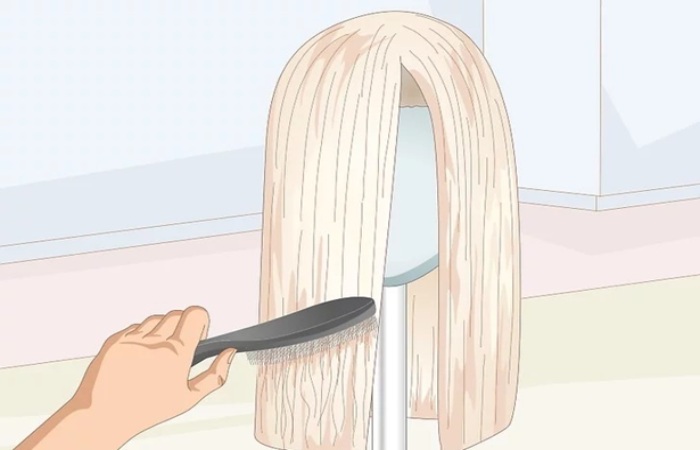
Before you begin coloring your wig, you need to make sure that it is completely devoid of tangles and knots first. This is of the utmost importance. It is possible that the color will not apply even if your wig is twisted or matted up. Before you begin coloring your wig, make sure there are no tangles or knots in it by using a comb with wide teeth to carefully brush them out. Additionally, this will make the hair far less difficult to work with.
Comb your wig carefully but firmly, beginning at the base of the hair and working your way up toward the scalp. A wig can be damaged by using a conventional hairbrush on it because the bristles are too fine. If you want to keep your wig in good condition, you should comb it with a comb that has wide teeth.
Use the hair ties to divide your wig into four to six equal sections:
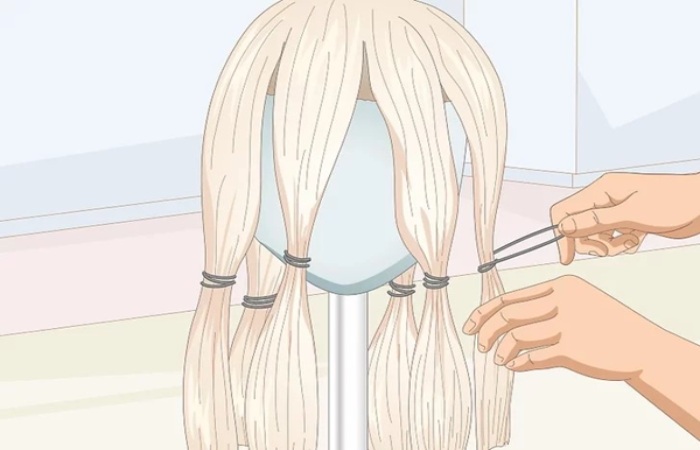
Since each wig, regardless of whether it is a lace front or HD lace wig, has its own individual characteristics, it is often advisable to divide your wig into smaller portions prior to dying it. Because of this, the procedure will be simpler, and you will have an easier time achieving a color that is consistent throughout.
You can section off your wig into four to six equal halves with the help of some hair bands. It is not necessary for them to be perfect; all you need to do is ensure that each segment contains approximately the same amount of hair. Additionally, this will make it much simpler to keep track of which components have been colored and which ones still require coloring.
2nd Step: Applying the Dye
Now that you have your wig sectioned off, it’s time to begin the dyeing process. You should always follow the directions of whichever dye product you are using to ensure that it is applied correctly. Here are some general tips for dyeing your wig:
Choose your dye based on your chosen colors and the color of your wig:
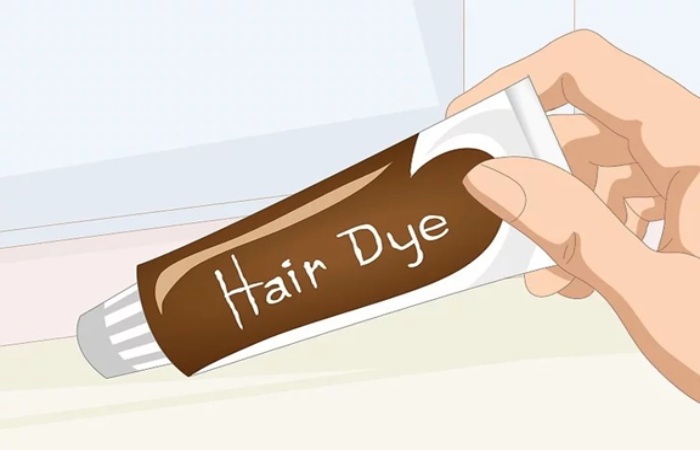
The color of your wig is one of the factors that determine how crucial it is to choose the appropriate dye for it. If you already have a dark-colored wig, then you should select a semi-permanent dye that has been developed with the intention of being used on dark hair. This will provide the best possible results. The same is true for colors that are light. The most effective method for choosing the right product is to determine what shade of color you wish to achieve and then match that shade with the color of your wig.
Prepare your hair dye by combining the ingredients as directed on the box:
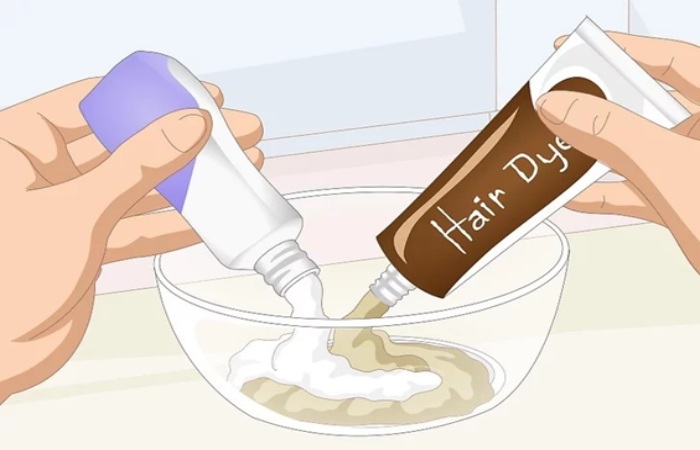
Because the directions for mixing the hair dye are going to be different for each product, you should always start by reading the label and making sure that you are following the instructions correctly. In order to achieve the desired color, you will typically need to combine two different components. This substance could be a powder, or it could be a liquid. If the hair dye you are using does not require any preparation at all, then you can skip this step. However, some hair dyes do require preparation.
To protect yourself from potential spills and messes, put on some disposable gloves and an old t-shirt:
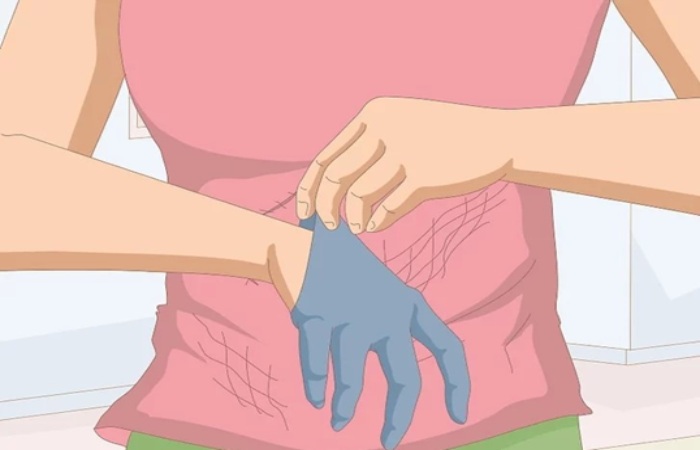 You should also make certain that you are taking the appropriate precautions in order to protect yourselves from any potential stains or messes that may occur. The most effective way to complete this task is by donning a pair of disposable latex or plastic gloves in addition to an old t-shirt. This will assist in preventing stains on both your hands and clothing. Furthermore, the majority of boxed hair dyes come with a pair of disposable plastic gloves; it is imperative that you make use of these gloves.
You should also make certain that you are taking the appropriate precautions in order to protect yourselves from any potential stains or messes that may occur. The most effective way to complete this task is by donning a pair of disposable latex or plastic gloves in addition to an old t-shirt. This will assist in preventing stains on both your hands and clothing. Furthermore, the majority of boxed hair dyes come with a pair of disposable plastic gloves; it is imperative that you make use of these gloves.
Cover a flat surface, such as a table, with layers of the newspaper:
 When it comes to coloring your wig, you will want to make sure that the color is distributed uniformly throughout the hair. Placing your wig on a flat surface while inspecting it from every angle is the method that is both the simplest and most effective approach to accomplish this task. Put some newspaper or paper bags down as a barrier to protect the surface you are working on, regardless of what it is. Check to check that the layer of protection is sufficiently thick to prevent the dye from penetrating through it.
When it comes to coloring your wig, you will want to make sure that the color is distributed uniformly throughout the hair. Placing your wig on a flat surface while inspecting it from every angle is the method that is both the simplest and most effective approach to accomplish this task. Put some newspaper or paper bags down as a barrier to protect the surface you are working on, regardless of what it is. Check to check that the layer of protection is sufficiently thick to prevent the dye from penetrating through it.
Protect the lace front of the wig by applying hairspray and allowing it to dry after being applied:

You should apply a substantial amount of hairspray to the lace front of your wig so that it is protected from the dying process. This will ensure that the lace front is not damaged in any way. While you are coloring your wig, using this hair product will not only add an additional layer of defense against the possibility of staining, but it will also assist you in maintaining the lace in its appropriate position. After you have finished covering the lace, you will need to dry it for approximately half an hour to an hour using a blow dryer. This will establish a barrier through which the dye should be unable to pass even if it attempts to.
Utilizing a hair dye brush, distribute the coloring agent throughout the entirety of one part:
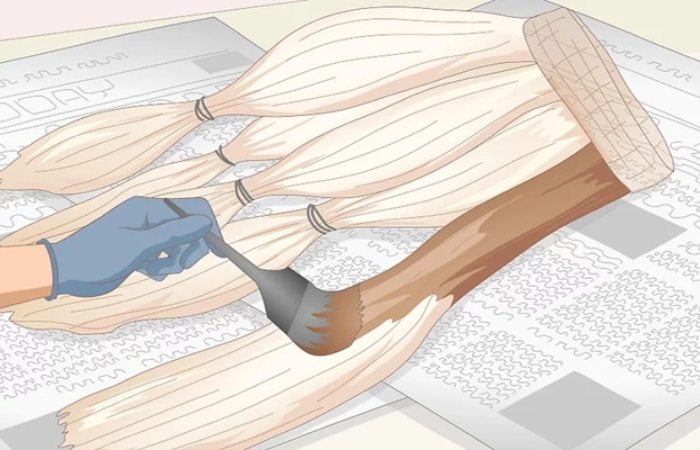
It is important to note that a hair dye brush is not the same thing as an applicator brush; rather, it has been purposely developed to offer the user the most precise and even dispersion of coloring agent possible. You should begin at the back of the wig and work your way forward, making sure that each section is completely covered before moving on to the next. Be careful not to overlook any regions since this could result in results that are not evenly colored. It is important that the dye be applied evenly across the surface; there should be no bare places where the base color is visible.
Brush the dye onto the remaining portions, being careful to avoid getting it on the lace front:
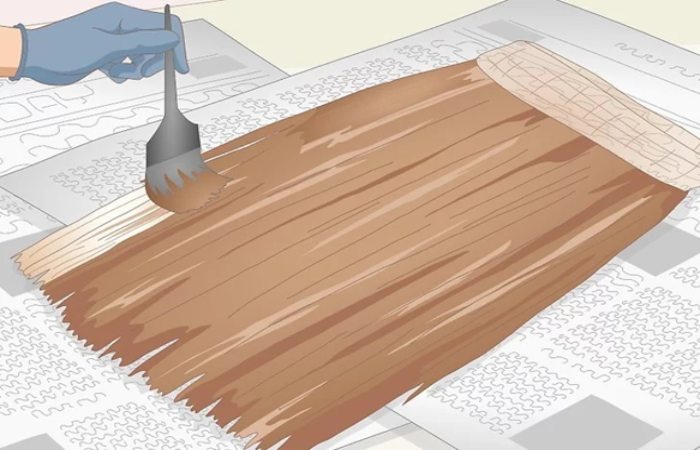
It is important to take care of areas such as the sides and the top of your HD lace wigs or lace front wigs in a manner that is analogous to the previous example. Make use of the same brush to apply the dye to these parts in a way that is both thorough and gentle. It is essential that you refrain from using an excessive amount of pressure while doing this since doing so could potentially cause harm to the lace or the hair. It is important to remember not to apply the dye on the lace front section of your wig because it may cause staining if you do.
Keep the dye in the mixture until it reaches the desired shade:

The package for your hair dye should indicate the amount of time your hair dye needs to rest before achieving the desired color and tone for your hair. This can take anywhere from fifteen minutes to one hour, on average. In general, lighter hair dyes, such as pastels, need to be left in the hair for a shorter amount of time than darker hair dyes. You can use your phone to create a timer so that you can keep track of how long your dye has been in the water.
3rd Step: Rinsing and Drying Your Wig
At the end of the coloring process, ensure that you have rinsed your wig thoroughly with cold water several times. This will help to remove any excess dye and also prevent staining. Here are some additional tips to help you with the rinsing:
Rinse your wig with cold water until the water runs clear:
Begin by rinsing your wig with cold water. You should do this multiple times until the water runs clear, as any remaining dye can still cause staining. Make sure that you are using a gentle stream of water to avoid scrubbing the wig while you are rinsing it; this could potentially damage the delicate hairs of your lace front wig.
Rinse your wig’s lace front in cold water to remove hairspray:
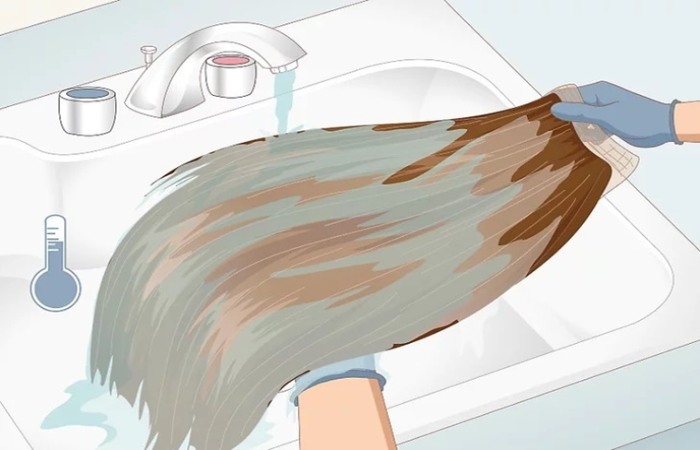
Rinse the lace front to remove hairspray after the color is out of your wig. After the hairspray is removed, the lace front will feel soft. This will help to protect the lace front from damage when styling your wig.
If your wig is dry or damaged, condition it:
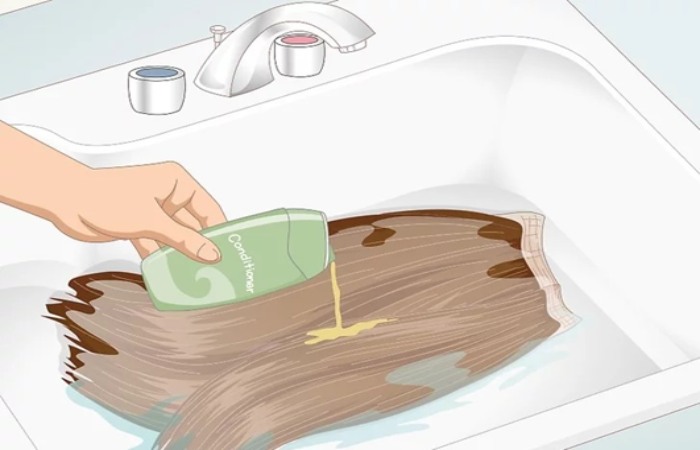
Applying a tiny bit of conditioner to your damp wig will help restore some of the moisture that was lost and protect it from further harm. After letting the conditioner sit for one to two minutes, you should then rinse it out. This will assist in putting moisture back into the hair, and depending on the severity of the damage caused by the dye, it might even reverse some of the effects. The majority of boxed hair colors come with a conditioner that you can apply to your hair after coloring it.
Comb your wet wig with a wide-toothed comb:
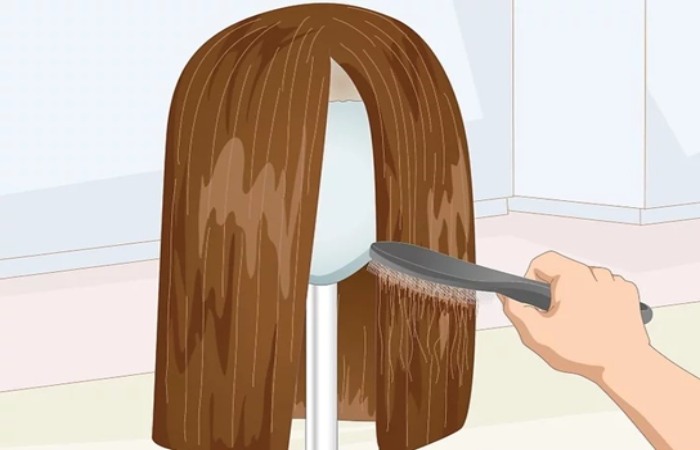 To avoid breakage and damage, use a wide-toothed comb to evenly and gently untangle your wig as its air dries. Do not attempt to brush the wig while wet: this can cause irreversible damage to your wig.
To avoid breakage and damage, use a wide-toothed comb to evenly and gently untangle your wig as its air dries. Do not attempt to brush the wig while wet: this can cause irreversible damage to your wig.
Allow your wig to air dry completely:
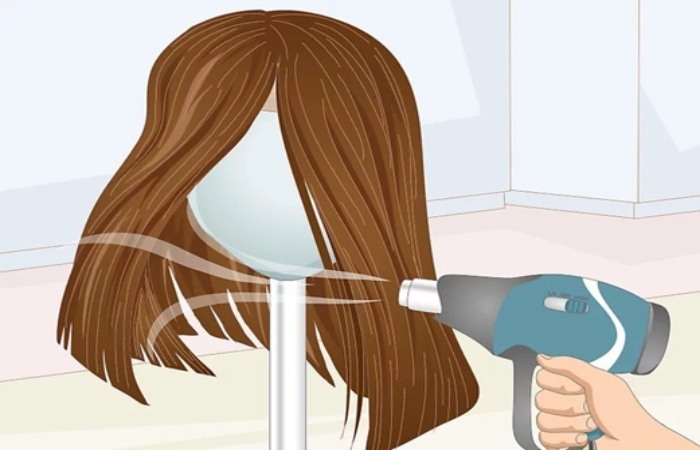
It is important that you provide time for your wig to fully air dry before styling or wearing it. If you apply any heat to a wet wig, this can cause irreversible damage. Make sure that the wig is fully dry before using any styling tools on it.
So there you have it! Follow these easy steps to color your HD lace wigs or lace front wigs safely and effectively. Remember to always treat your wig with care, no matter what kind of hair dye you use. With the right maintenance, your wig will stay looking beautiful for a long time. Good luck!

